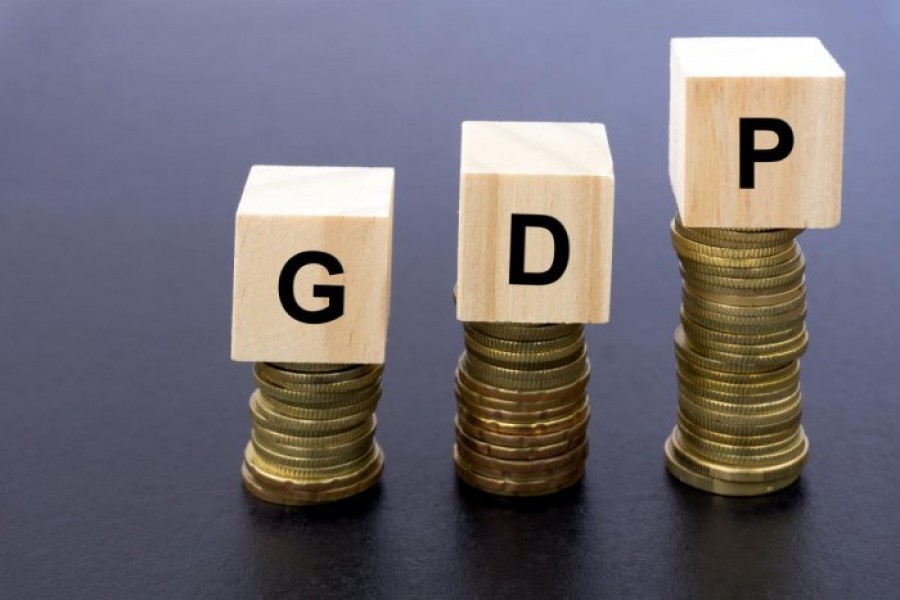An agreed but apparently forgotten method of updating Bangladesh's gross domestic product (GDP) statistics every three months crops up again in discussion. A visiting team of the International Monetary Fund (IMF), at a meeting with the national statistical agency last week, stressed releasing the GDP data quarterly. Earlier in last year, the planning ministry announced that Bangladesh Bureau of Statistics (BBS) would publish the quarterly GDP data from the following fiscal year. Both the minister and the state minister for planning said that quarterly release of GDP data is necessary as most of the countries are now doing so. Moreover, Bangladesh has significantly improved its data- collection and- compilation system. So, it should not be a very difficult task to prepare and release the GDP counts quarterly.
In Bangladesh, the current practice is to release the GDP estimate annually. Generally, a month or two before the end of the fiscal year, the preliminary estimate of the GDP for the year is being published by the BBS. Later, the final estimate comes four to five months after the end of the year. Nevertheless, the discussion on the release of GDP data on a three-month basis was initiated more than two decades ago. The Asian Development Bank (ADB) extended technical assistance for examining the scope and possibility of quarterly GDP data. With the help of the ADB, the 'Handbook on Sources and Methods of Quarterly Series of the Bangladesh System of National Accounts' was prepared. Pilot compilation of quarterly GDP of the country was also done. BBS staffs also got necessary training in this regard.
So, BBS has finally started compiling Quarterly National Accounts on an experimental basis to supplement annual compilation of GDP. To provide a short-term update on the macroeconomic indicators, BBS also had compiled a historical series of quarterly GDP since the fiscal year 1995-96 till 2001-2002. The work has been done under Bangladesh National Account Framework (BNAF) following the general concepts, methodology and classification of the System of National Accounts or SNA-1993 designed by the United Nations (UN).
The latest version of SNA was released in 2008 and UN members are expected to follow the newly prepared methodology and guidelines. Bangladesh has also tried to follow many recommendations of SNA-2008 on rebasing the GDP with 2015-16 as new base year. The country is, however, yet to adopt the Supply and Use Table (SUT) which is necessary to address inconsistencies or mismatches in GDP estimation. It was in the fiscal year 2005-06, with the technical assistance from the ADB, BBS compiled the country's first and only SUT. The exercise later discontinued-- and the statistical bureau never resumed it.
It is to be noted here that GDP is 'an aggregate measure of the total value of gross output produced within the economic territory of a country in a specified period, before deducting allowance for consumption of fixed capital (CFC) or depreciation.' GDP is generally measured by using three different approaches: production, expenditure and income. It is not unlikely that there are some inconsistencies in the GDP data derived from these three methods. SUT is helpful to identify the mismatches and correct those.
A number of practical challenges are also there to estimate the GDP quarterly. Despite some improvements in field-level data collection and compilation, there are still some barriers to gathering necessary data rapidly. Lack of adequate and trained manpower is a problem for long. BBS also doesn't have sufficient statisticians. The national statistical agency also needs more modern logistics and updated information technology (IT) support.
BBS is operated under the Statistics and Informatics Division of the Ministry of Planning. The allocated budget for the division in the current fiscal year is Tk 4.10 billion. Of this, allocation for BBS is Tk 3.81 billion. According to the Demands for Grants and Appropriations 2022-23, there are 17 important activities, projects and programmes scheduled to be implemented in the current fiscal year. None of these explicitly includes the release of quarterly GDP data although improving national accounts, and price and wage statistics is a priority there.
The bureau also needs data support from the other relevant agencies and industries to prepare the quarterly GDP estimate in time. As many agencies and sectors are not used to updating their data on quarterly basis, it requires some additional effort. For instance, to estimate GDP, the country's entire economy is divided into several industries using the International Standard Industrial Classification (ISIC). BBS has used the ISIC Rev-4 classification for the 2015-16 rebased GDP series. The bureau, however, took 19 of 21 industrial sectors in this regard mainly due to data limitations. It will take some time to overcome the shortcomings.
Despite all these shortcomings, introduction of the quarterly GDP estimate in the country is overdue. India introduced quarterly estimates in June 1999. The Central Statistical Organisation (CSO) now releases the quarterly GDP on the last working day after two months of the end of a quarter. More than 100 countries are now regularly publishing the quarterly GDP reports and those are mostly preliminary in nature. The revision of the previous quarter always follows once the preliminary estimate of a new quarter is released. In South Asia, no other country but India and the Maldives publishes quarterly GDP estimate.
Quarterly estimate of GDP is helpful to gauge the movement of economy at short intervals. It gives frequent update on the macroeconomic situation and so policymakers can adjust the relevant polices accordingly. An advantage of the quarterly estimate is that it is easy to identify whether economy is in recession or not. Two consecutive quarterly declines in GDP indicates that an economy is in recession.
Again, to estimate the GDP quarterly there will be an urge to update the various economic indicators and sectors' performances rapidly. As Bangladesh is now in the final phase of graduation from the Least Developed Country (LDC) status, formal introduction of quarterly GDP will be a vital step to improve the country's data transparency and quality in post-graduation period.
asjadulk@gmail.com


